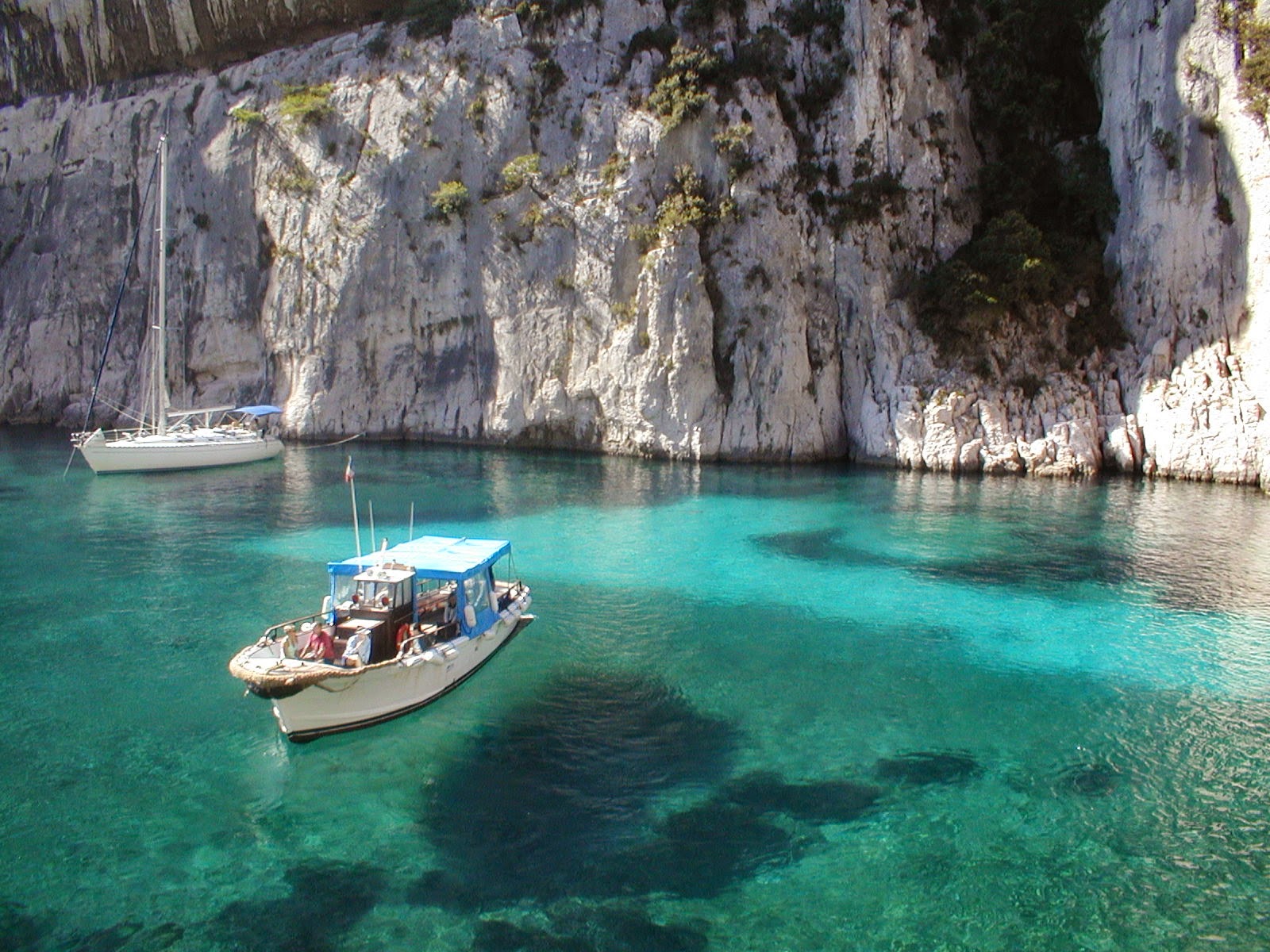Calanques, Cassis, South of France
A calanque is a soak walled delta, inlet, or sound that is produced in limestone, dolomite, or other carbonate strata and found along the Mediterranean coast. A calanque is a soak sided valley shaped inside karstic districts either by fluvial disintegration or the breakdown of the top of a buckle that has been thusly mostly submerged by an ascent in ocean level.
The best known samples of this structuring might be found in the Massif des Calanques (Massís dei calancas in Occitan, the notable nearby dialect) in the Bouches-du-Rhône département of France. This extent reaches out for 20 km long and 4 km in width along the coast in the middle of Marseille and Cassis, coming full circle in Marseilleveyre (432 m) and Mont Puget (565 m). Comparative calanques can additionally be found on the French riviera close Estérel and on the island of Corsica (see Calanques de Piana). The most noteworthy point along the calanques are spotted at Mount Puget (565 meters)and in the mountains of Marseilleveyre (432 meters). Similitudes are seen in the middle of calanques, and rias, the stream mouths structured along the bank of Brittany in Northern France.
Guide of the Calanques in the middle of Marseille and La Ciotat.
The limestone calanques of the Massif des Calanques exist in the as of late made Parc National des Calanques (2012) and incorporate the Calanque de Sormiou, the Calanque de Morgiou, the Calanque d'en-Vau, the Calanque de Port-Pin and the Calanque de Sugiton. There are extra calanques in the parc, further east along the coast, etched into Cap Canaille. These calanques shaped in altogether different rock strata, frequently in layers of established stone combination.
Calanques are additionally display in the Italian Apennines, in areas, for example, the Accona Desert and in the Calanchi characteristic safeguard of Atri.
The calanques in the middle of Marseille and Cassis are mainstream amongst sightseers and locals indistinguishable, offering a few vantage focuses, (for example, the Corniche des Crêtes and Cap Canaille) permitting breathtaking scenes. An extraordinary number of climbers regular the range, after various premarked trails. The precipices are additionally utilized as preparing spots for rock climbers. Nonetheless, this unnecessary utilization has postured issues of potential harm to this sensitive microhabitat.
The vast majority of the calanques are likewise shut to people in general amid the late spring (regularly July through September) because of the dangers of timberland fire that frequently happen amid the dry season.
The best time to visit calanques is most likely March through May, when temperatures are still crisp and, dissimilar to fall and winter, downpour is generally very uncommon. As no crisp water sources are accessible in the calanques, it is educated to convey expansive supplies with respect to water, particularly amid the hot summer to forestall genuine parchedness.
Pontoon visits are additionally accessible beginning either from Marseille, Cassis or La Ciotat, which can accommodate some awesome touring.
In April 2012, the vast majority of the calanques were announced National Parks because of their uniqueness.
Calanques, Cassis, South of France
 Reviewed by Ali Hamza
on
00:41
Rating:
Reviewed by Ali Hamza
on
00:41
Rating:
 Reviewed by Ali Hamza
on
00:41
Rating:
Reviewed by Ali Hamza
on
00:41
Rating:

No comments